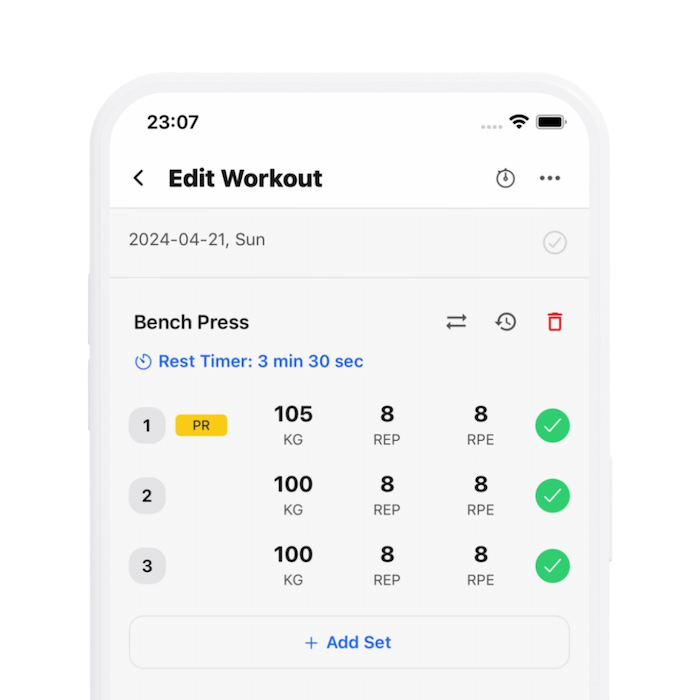30 Seconds SummaryThe RPE Scale: Over-Hyped or Missing Ingredient?
- RPE stands for Rate of Perceived Exertion, a scale to measure workout intensity.
- The original RPE scale, developed by Gunnar Borg in the 1980s, ranged from 6 to 20, but was later simplified to a 1-10 scale by Mike Tuscherer.
- RPE 10 indicates maximum effort with no reps left, while lower values suggest more reps in reserve; RPE 9 means 1 rep left, RPE 8 means 2 reps left, etc.
- RPE provides a smarter, flexible alternative to percentage-based training by allowing adjustments based on how you feel on a given day.
- Most effective training should occur within an RPE range of 7 to 9 to balance intensity and safety.
- Training at an RPE of 10 continuously can overly stress the body, while going below 7 might not provide sufficient challenge.
- Percentage-based training remains valuable, but incorporating RPE allows for adjustments due to varying daily performance and recovery states.
- Using RPE wisely can prevent injury and enhance long-term progress by avoiding overexertion and promoting sufficient recovery.
Biolayne
Mike Samuels
